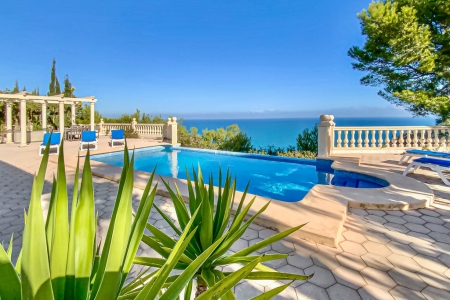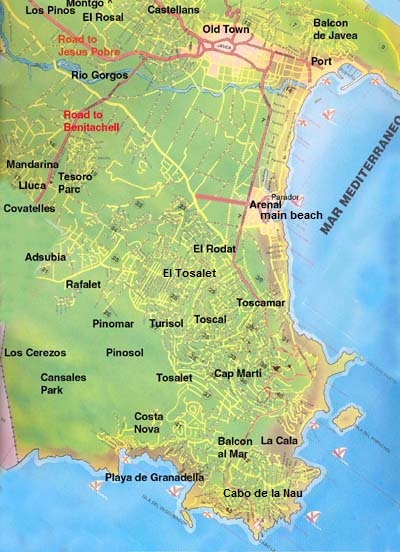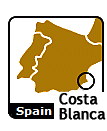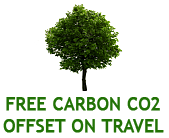Javea villas - villa rental in Javea
Javea, is a town of great beauty, magical landscapes, a haven of peace and serenity. Here, Nature has been so generous and splendid that it is difficult to find a similar place. The sea is pure blue, clean and revealing. The mountain, washed by the Mediterranean sea, offers us lush vegetation and many local species of flora and fauna.
Jávea framed by the Capes of La Nau and Sant Antoni on the shores of the Mediterranean sea. The town occupies an area of 68.4 km2. in the north of the Costa Blanca and is protected from continental winds by the mountainous barrier of the Montgó. It has a varied landscape, both along its 25 kilometres of coast and inland, a mild climate throughout the year with an average temperature of 18 ºC, careful urban planning and much to offer tourists - all waiting in this beautiful town which has conserved all the charm of traditional seafaring communities.
-

Rental villas Javea La Galesa3 bed, 4 bath, sleeps 6,
£850 - £2,180 per week
 The coast of Jávea, 25 kilometres long, with beaches and creeks which stand out because of their natural beauty, their transparent waters and the Mediterranean forest which surrounds them.
The coast of Jávea, 25 kilometres long, with beaches and creeks which stand out because of their natural beauty, their transparent waters and the Mediterranean forest which surrounds them.
From north to south, the Capes of Sant Antoni, Sant Martí, Negre and La Nau mark the coastline. Jávea has a great variety of beaches to choose from:
Pebble or rock beaches like "La Grava", "El 1º Muntanyar", "Calablanca", "El 2º Muntanyar" or "Benissero" are ideal for water sports such as jetski, windsurfing and canoeing, and are all protected by vigilance services.
The bustling "Arenal" beach offers fine and shallow waters. Its many services include: vigilance services, play areas for children, natural and artificial shade, small motor boat and skate hire, restaurants, cafés and ample parking facilities. There are also small coves with smooth stones or rock, located in unique, privileged places, like the "Tangó" or "Pope", "La 1ª Caleta", "La Barraca" or "Portitxol", the paradisiacal "Granadella" creek which is ideal for diving, and "Ambolo" (naturist). Other coves are only accessible on foot or by boat, such as the "2ª Caleta", "Cala del Francés" or "Cala Sardinera".
Jávea´s coast also hides a series of caves which are accessible by boat, such as the caves of "Tabaco" and "Orguens" around Capes Negre and La Nau, and the "Cova Tallada" on the Cape of Sant Antoni, which can also be reached on foot.
Frequent attacks from marauding pirates forced Jávea's inhabitants to settle 2 km from the coast in a walled town - these walls remained standing until 1877. The enclosure formed by the former walls now forms Jávea's historical centre, which is situated around the Gothic Church of San Bartolomé surrounded by whitewashed houses with iron grilles and lintels made out of golden porous 'Tosca'clay. In this area the Ayuntamiento, the Food Market, the Cultural Centre, the Museum of Archaeology and Ethnology and the Chapel of Santa Ana are all located within easy walking distance. The marine and port area, known as the Aduanas del Mar, is located 2 km from the old town centre and is the place to see the Church of Our Lady of Loreta, constructed in the shape of a keel. The Arenal area, with the Costa Blanca's only National Parador, contains Jávea's most popular beach -the Playa del Arenal - and is reached by following the road that runs parallel to the Playa del Benissero. Jávea has a 20 km coastline that stretches from the Cova Tallá to the Cala de la Granadella. There is an interesting mixture of beaches with soft sandy beaches (Arenal beaches), small, shingled beaches bordered by pine trees which are suitable for diving (Granadella beaches), and naturist beaches (Ambolo beaches). There are also small coves: Portichol and La Sardinera. A more traditional Jávea is found inland with riu-raus and orange groves that are protected from the harsh continental climate by the natural barrier formed by Montgó, which extends to the north of Jávea and serves as a border between Jávea and Dénia.
 Javea is a town of great beauty, magical landscapes and a haven of peace and serenity. Here, nature has been so generous that it is difficult to find a similar place that can offer everything to the holidaymaker or resident without travelling far.
Javea is a town of great beauty, magical landscapes and a haven of peace and serenity. Here, nature has been so generous that it is difficult to find a similar place that can offer everything to the holidaymaker or resident without travelling far.
Interestingly Javea is split between the historic town, old port and the newer Arinal beaches, which is framed by the Capes of La Nau and Sant Antoni. Its coastline is 25 km long with beaches and creeks which stand out because of their natural beauty, as well as their transparent waters and the Mediterranean forest which surrounds them.
The town spreads up the slopes of the Montgo Mountain, that dominates the view inland and along the coast, and which offers the town protection from the continental winds. The micro climate here gives rise to lush vegetation and many local species of flora and fauna.
Here are the 5 most essential things to do in Javea.

1) Explore the hidden coastline beyond the sandy Arenal beach to the south, which are accessible by boat, such as the caves of "Tabaco" and "Orguens" around Capes Negre and La Nau, and the "Cova Tallada" on the Cape of Sant Antoni, which can also be reached on foot. |
|
|
 3)The former walled town now forms Jávea's historical centre and is situated around the Gothic Church of San Bartolomé, which in turn is surrounded by whitewashed houses with iron grilles and lintels made out of golden porous 'Tosca' clay. In this area the Ayuntamiento (Town Hall), Food Market, Cultural Centre, Museum of Archaeology and Ethnology and the Chapel of Santa Ana are all located within easy walking distance. There are some great tapas bars and restaurants to be found in the narrow streets here. 3)The former walled town now forms Jávea's historical centre and is situated around the Gothic Church of San Bartolomé, which in turn is surrounded by whitewashed houses with iron grilles and lintels made out of golden porous 'Tosca' clay. In this area the Ayuntamiento (Town Hall), Food Market, Cultural Centre, Museum of Archaeology and Ethnology and the Chapel of Santa Ana are all located within easy walking distance. There are some great tapas bars and restaurants to be found in the narrow streets here. |
 4) The marine and port area, known as the Aduanas del Mar, is located 2 km from the old historic town centre and is the place to see the modern ‘Church of Our Lady of Loreta’, constructed in the shape of the ships keel. Here you will also find some lovely bars and restaurants on the frontline and in the back streets too. 4) The marine and port area, known as the Aduanas del Mar, is located 2 km from the old historic town centre and is the place to see the modern ‘Church of Our Lady of Loreta’, constructed in the shape of the ships keel. Here you will also find some lovely bars and restaurants on the frontline and in the back streets too. |
 5)Take a short drive up behind Javea’s historic town towards the Montgo Mountain, whereby you’ll find the monastery of Nuestra Señora de los Angeles, although one should note it is only open to visitors on Sundays and fiestas. Alongside the monastery you’ll find a dirt track that will take you to a series of ancient windmills that overlook the town and the coastline too. It’s a short easy walk of 300 metres, but you can meander around the site and into the windmills themselves. There are pathways around that take you along the edge of the hillside and even down to the town, though these pathways tend to be rough and rocky and not ideal if you have mobility issues. 5)Take a short drive up behind Javea’s historic town towards the Montgo Mountain, whereby you’ll find the monastery of Nuestra Señora de los Angeles, although one should note it is only open to visitors on Sundays and fiestas. Alongside the monastery you’ll find a dirt track that will take you to a series of ancient windmills that overlook the town and the coastline too. It’s a short easy walk of 300 metres, but you can meander around the site and into the windmills themselves. There are pathways around that take you along the edge of the hillside and even down to the town, though these pathways tend to be rough and rocky and not ideal if you have mobility issues. |
 Apart from hotel accommodation, which includes the Parador on the Arenal seafront, there are only a few apartment blocks that straddle the seafront. Seeking a villa to rent means you’ll be located inland of the Arenal, or high up on the cliff edges around Cabo de la Nao Apart from hotel accommodation, which includes the Parador on the Arenal seafront, there are only a few apartment blocks that straddle the seafront. Seeking a villa to rent means you’ll be located inland of the Arenal, or high up on the cliff edges around Cabo de la Nao
|
 Apart from visiting the next town, Denia, you can take a ferry to Ibiza and explore the island a little. The ferry crossing takes 3hrs 30 mins each way, so you would ideally need to spend one or two nights to make the journey worthwhile. View from La Gelesa http://www.villaspain.co.uk/villas/javea/la-galesa Apart from visiting the next town, Denia, you can take a ferry to Ibiza and explore the island a little. The ferry crossing takes 3hrs 30 mins each way, so you would ideally need to spend one or two nights to make the journey worthwhile. View from La Gelesa http://www.villaspain.co.uk/villas/javea/la-galesa |
We have compiled a simple list of useful Spanish words and phrases that may be of help to you when sightseeing, dining out, shopping etc. Please visit Learn Spanish








